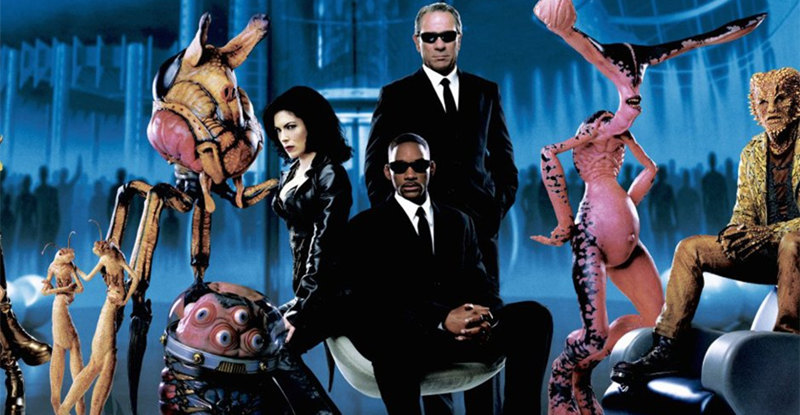You just want to slap the handsome right off of Alain Delon’s ridiculously flawless face. The 24-year old star of “Purple Noon” (1960) is a walking special effect who no doubt had a very special effect on quite a few audience members; he wasn’t just an angelic face but a perfectly trim body, and I wouldn’t be the least bit surprised if at least a few of the script’s numerous shirtless scenes were added after he was cast.
Delon had just barely begun to be known as an up-and-coming hunk when director René Clément won an argument with his producer that landed Delon the role that would launch him to mega-stardom. Delon plays Tom Ripley, the scheming American tourist of Patricia Highsmith’s now-famous novel “The Talented Mr. Ripley,” a young man who uses his calculating charm to win hearts, conduct fraud, and commit murder. Casting such a sculpted and innocent beauty as a sociopath was a stroke of genius; situating him on the equally gorgeous Italian coast reveals his empty inner being to be that much uglier by contrast. How can such a pretty boy casually consume his dinner while a corpse lies in the middle of the floor?
“Purple Noon,” following Highsmith’s book faithfully if not literally, hews to the old monster movie formula, holding back its lurking horror for a dramatic and strategic reveal. Ripley has befriended an utterly spoiled scion of wealth named Philippe (Maurice Ronet), and the film initially casts Philippe in the dominant role, using and abusing the naïve American as he has used and abused everybody in life, including his girlfriend Marge (Marie Laforêt). The young men appear to be gallivanting casually about town, but elitist pranks soon yield to bloodier rituals.
No doubt Ripley was born stone-cold dead inside, but, like everyone else in his life, we see only his placid, perfect surface, and his gradual emergence from Philippe’s shadow almost feels like a journey of discovery. One of Clément’s and co-screenwriter Paul Gégauff’s canniest decisions is to show Tom growing tentatively into his true monstrous self. Some of the best scenes focus on the details of his transformation, one of the most famous being a lengthy sequence in which Ripley practices forging a signature over and over again. When he kills, it is without remorse but also without much planning; if things had played out differently he might have just hung out with his “friends” and had fun, but he can go with the flow, even when the flow drains into a sewer.
“Purple Noon” is like a noir staged in the bright, unrelenting sun which is to say it is not a noir at all, but even darker for its lack of shadows. And Delon’s impossible and irritating handsomeness is the key to it all. You never once feel that any of his dupes are dimwits. Who wouldn’t fall for that face and that smile?
The film no doubt has an even greater appeal to viewers in love with the idea of lazily traveling through a largely unspoiled Italy. I’m not a tourist by nature or temperament, so that particular charm is somewhat lost on me, but it’s not hard to understand why this first Ripley adaptation has held audiences in its thrall for more than half a century now. The novel was later adapted in 1999 by Anthony Miinghella with Matt Damon as the star (there is at least a passing resemblance to the young Delon though Damon was five years older). I have not seen it, but though it received generally strong reviews, it’s fair to say that “Purple Noon” remains the version with greater critical acclaim.
Video:
The film is presented in its original aspect ratio of 1.66:1. The 1080p transfer is virtually flawless. “Purple Noon” was long a programming staple because it looks so damned beautiful on the big-screen, and the shimmering water sparkles quite vibrantly in high-definition too. Image detail is excellent throughout, and the lengthy sailing sequences are just breathtaking.
Audio:
The LPCM Mono track is crisp if not particularly dynamic. Nino Rota’s score doesn’t quite boom but it’s presented with some sense of richness. Optional English subtitles support the mostly French audio.
Extras:
The extras are fairly modest on this Criterion release.
The most substantial is an interview with Rene Clément scholar and author Denitz Bantcheva (27 min.), conducted in 2012 in Paris for the Criterion Collection. Bantcheva is quite effusive in her praise for the director and the film, and her knowledge is absolutely impeccable. She provides a brief history of Clément starting with his documentaries in the 30’s and his work as assistant director on Cocteau’s “La belle et le bete” (1946). Bantcheva is an accomplished writer but as far as I know she is a new face for Criterion, and I hope we hear more from her in the future.
The disc also includes an interview with Alain Delon (9 min.), originally broadcast on the French TV program “Cinépanorama” on Nov 24, 1962 – he’s still annoyingly handsome in this clip too. We also get an interview with novelist Patricia Highsmith (19 min.), originally broadcast on the French show “Variances’ on Aug 3, 1971. The only other extra is a four-minute Trailer.
The 36-page insert booklet includes an essay by critic Geoffrey O’Brien and an excerpt from an interview with René Clément that originally appeared in the Feb 1, 1981 issue of “L’avant-scène.”
Film Value:
Seriously, Alain Delon, cut it out. You quite literally make everyone else look bad by comparison.


